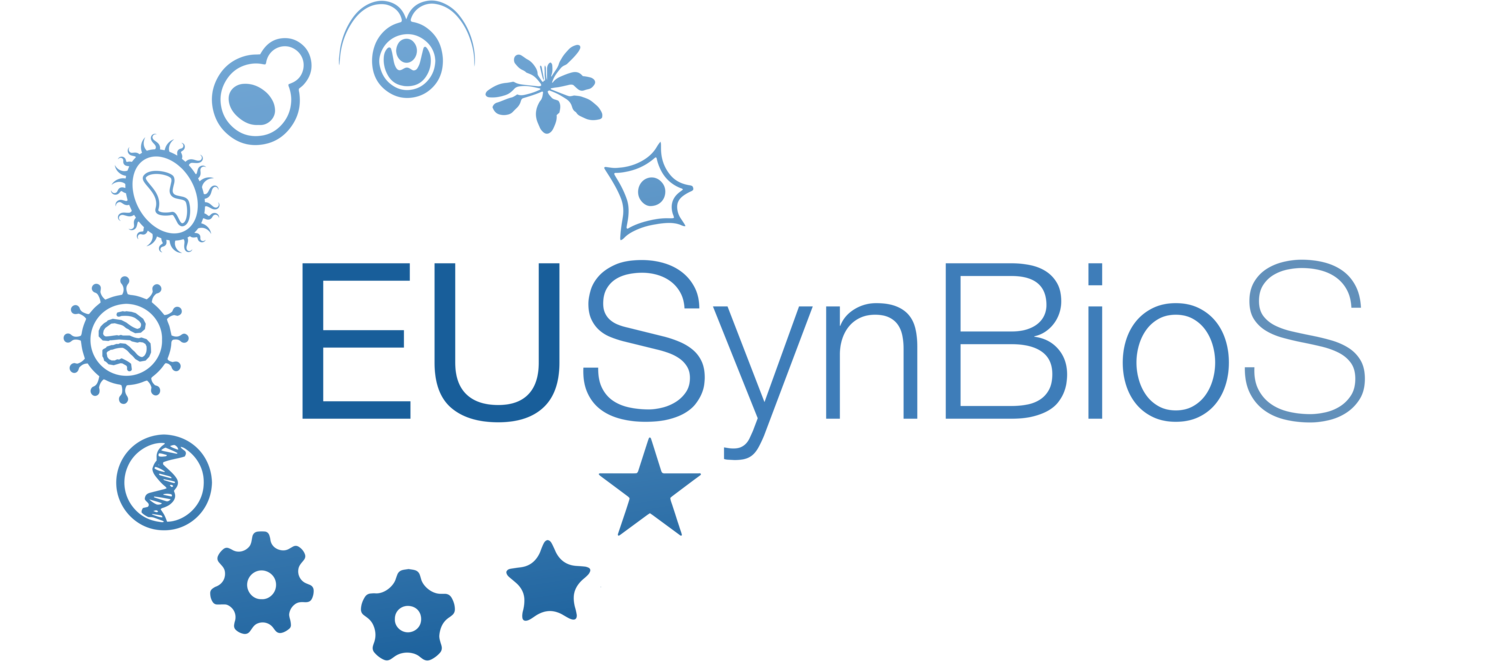CAS Conference on Synthetic Biology 2015
This July the second CAS conference on Synthetic Biology took place in Munich at the the Faculty of Biology of the Ludwig-Maximilians-University of Munich (LMU). From the 27th to the 29th of July, top scientists in the field shared their most recent advances with the community . The conference was divided into five different sessions covering a wide range of topics from mirror biology, orthogonal bio-systems, metabolic and genome engineering technologies as well as translational aspects of Synthetic Biology.
The conference started with the ‘Mirror Biology and Orthogonal Bio-systems’ session with a talk from Jörg Hoheisel (DKFZ). He talked about his research on establishing a fully synthetic biological system using enantiomeric forms of biological molecules. After the coffee break, Beatrix Süss (Darmstadt) presented her work on riboswitches, offering the possibility to achieve tight control over engineered circuits in all the domains of life. The day ended with an exciting talk by Uri Alon from the Weizmann Institute. In his research, by means of using the concept of Pareto optimality they are able to infer phenotypes from data, a promising perspective to make biology more predictive.
On Tuesday, the whole day was dedicated for the ‘Enabling Technologies for Synthetic Biology’ session. The day started with Roman Jerala (National Institute of Chemistry, Ljubljana and EUSynBioS advisor) and his work in structural synthetic biology. By using protein motifs and also DNA origami, his group can generate building blocks that, in conjunction can get into a defined macromolecular structure. However, the big challenge is to get these designed bionanostructures to self-assemble in vivo. I had the opportunity to hear Roman Jerala in 2012 at the EMBO Course ‘Introduction to Synthetic Biology’; it was amazing to hear him again and see the evolution of his research over the last three years. The next talk was by Timothy Lu (MIT), where he gave an overview of his work in microbiome engineering and how, by using in vivo DNA-writing in bacteria that can survive the human gut, effective and combinatorial therapeutics will be possible in the future. Personally, I’m still a little bit sceptical about living organisms being the best chassis for microbiome engineering—I think there are quite a lot variables that must be taken into account to get reliable platforms working. After lunch, Andrew Horwitz (Amyris, Inc.) gave an overview of what is happening inside AMYRIS and how they are planning to use CRISPR/Cas9 for multiplexed metabolic engineering in yeast. I think everybody was astonished when he talked about their huge production plant in Brazil that is able to process a million tons of sugarcane per year to produce farnesene. The last talks of the day were by two Grand Prize winning iGEM teams from 2014: the UC Davis team presenting their work on the design of a quality control technique to measure olive oil quality, and the Heidelberg team with their project ‘The ring of fire’.
On the final day, the first session was ‘Synthetic Cell/Genome Engineering’. The session started on yeast engineering with the work of Joel Bader (Johns Hopkins) and their study on synthetic yeast genome rearrangement and minimization. Later on, Floyd Romesberg (Scripps) shared with the audience his success in generating a semi-synthetic E. coli able to replicate and transcribe an expanded genetic alphabet, and how they are now on the way to get an expanded genetic alphabet into proteins. The session ended with the talk by Clyde Hutchison III (J. Craig Venter Institute) and his systematic work to get the first cell with a minimised genome generated by global design and synthesis. I have to say that I was looking forward to this talk, I remember being quite excited when the paper first came out back in 2010. It was the very paper that inspired me to go into the minimal cell synthetic biology field, in which I’m currently doing my PhD. It was a great feeling to hear the full story about JCVI-syn2.0 and the challenges that still have to be overcome in order to obtain the first minimal cell.
The next session on Wednesday was ‘Metabolic Engineering’ followed by ‘Translational Aspects of Synthetic Biology’. Here, Paul Freemont (Imperial College London) shared with us how synthetic biology is moving in the UK, and their interest in getting academia and industry together. He also spoke up for the implementation of systematic design in synthetic biology and the generation of well characterised, easy to share biological standards. I’m still not sure about what is the best way to get to a more standardised synthetic biology—I really believe that we need a universal language that must be implemented by everybody working on the field as well as a global repository. I think it is the responsibility of the current leaders on the field to start this process, and for us students and postdocs to keep on this track.
All together, the talks, the poster sessions, the coffee breaks and lunches made this second CAS Conference on Synthetic Biology a big success. Munich became a centre of synthetic biology this summer and I think it did quite well.
Written by:
Daniela Garcia
Daniela is a PhD student in Biochemistry and Biophysics at LMU Munich.
Edited by: Devang Mehta
Disclaimer: Views and opinions expressed in EUSynBioS Pulse articles belong solely to the writer(s). They do not reflect the opinion of the Community, the Advisory Board or the Steering Committee

